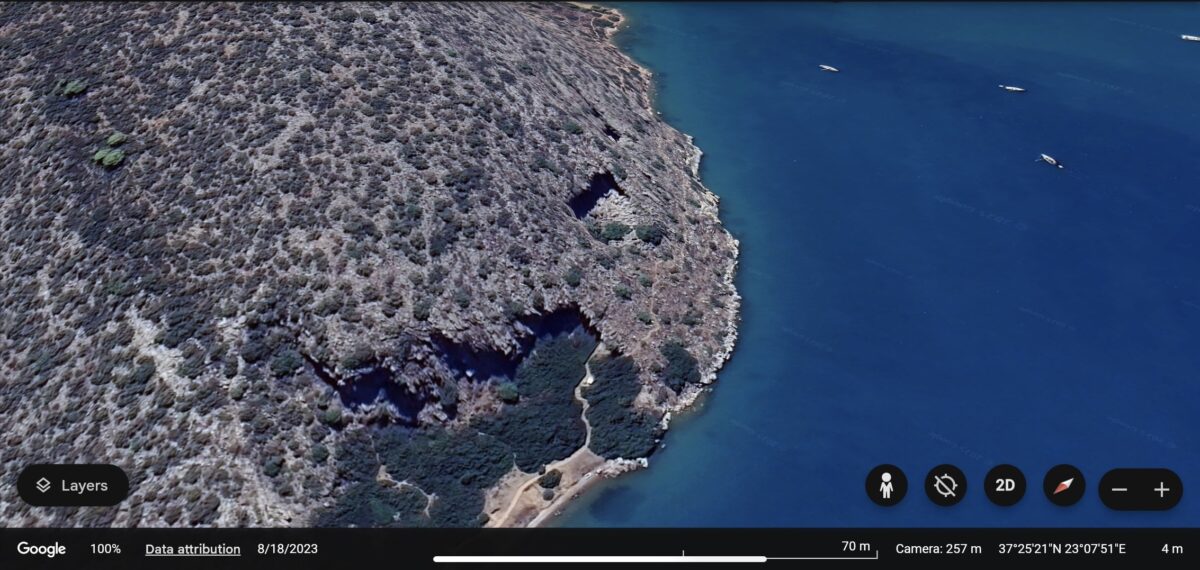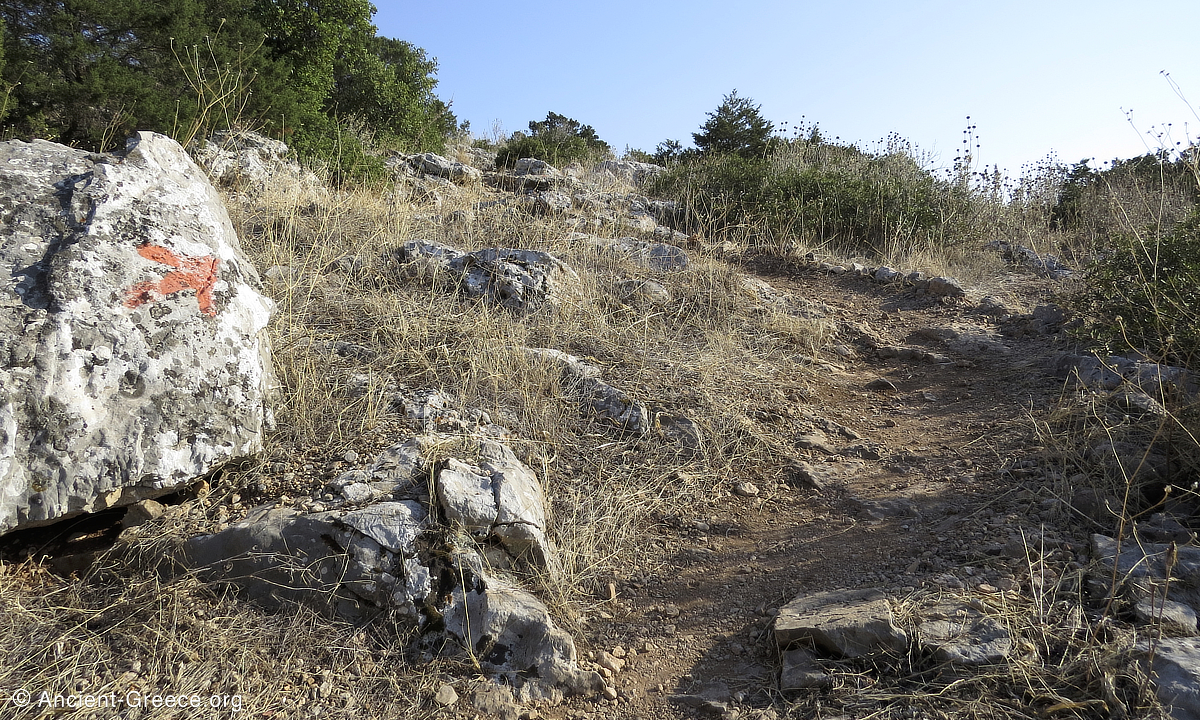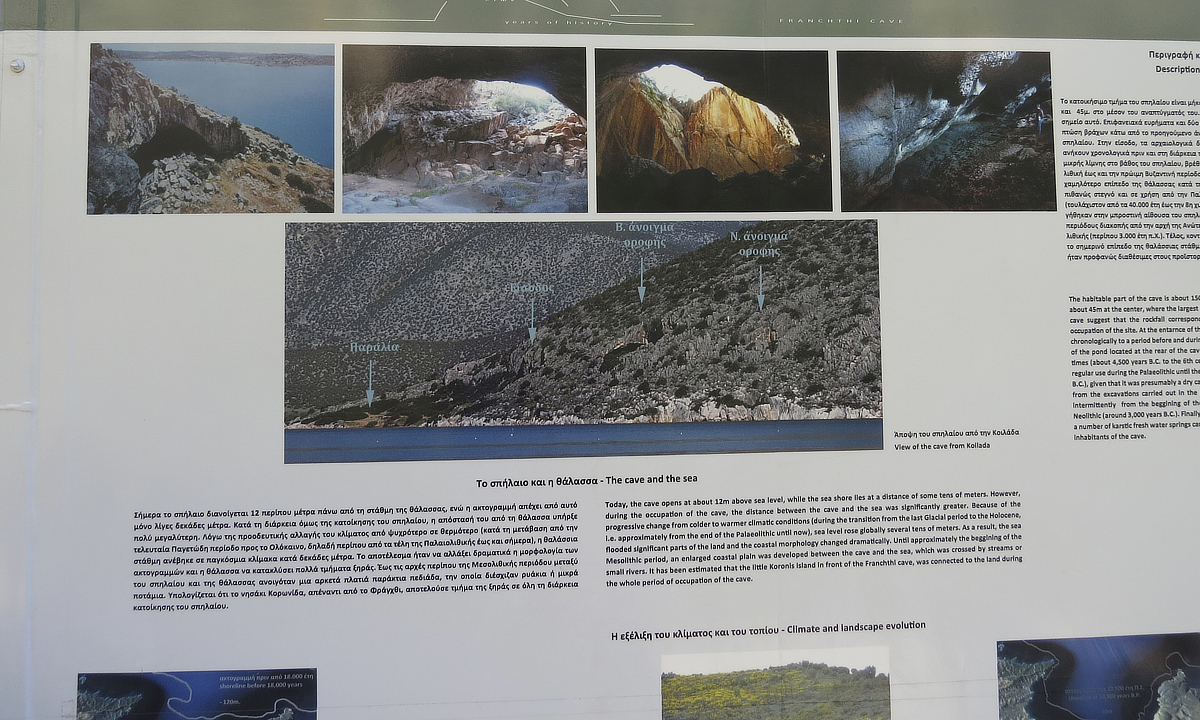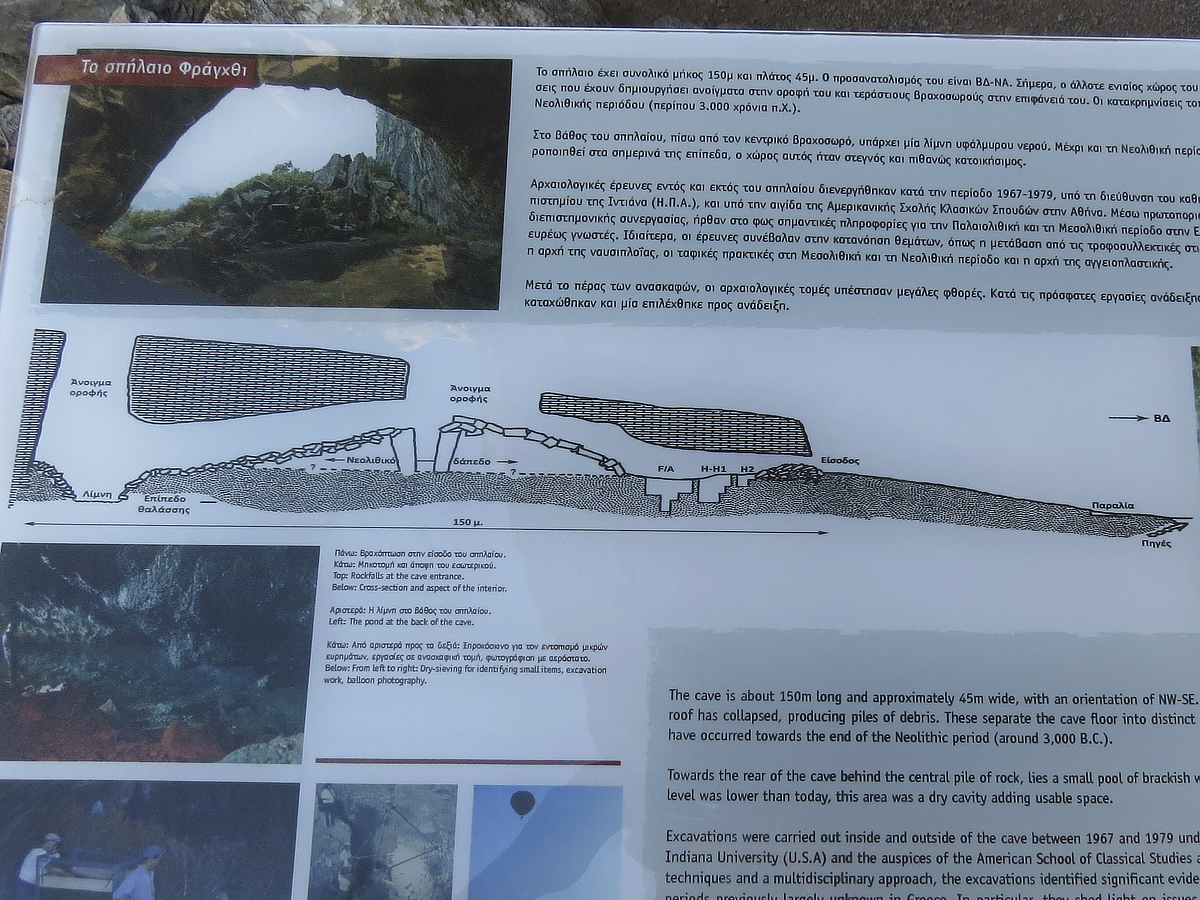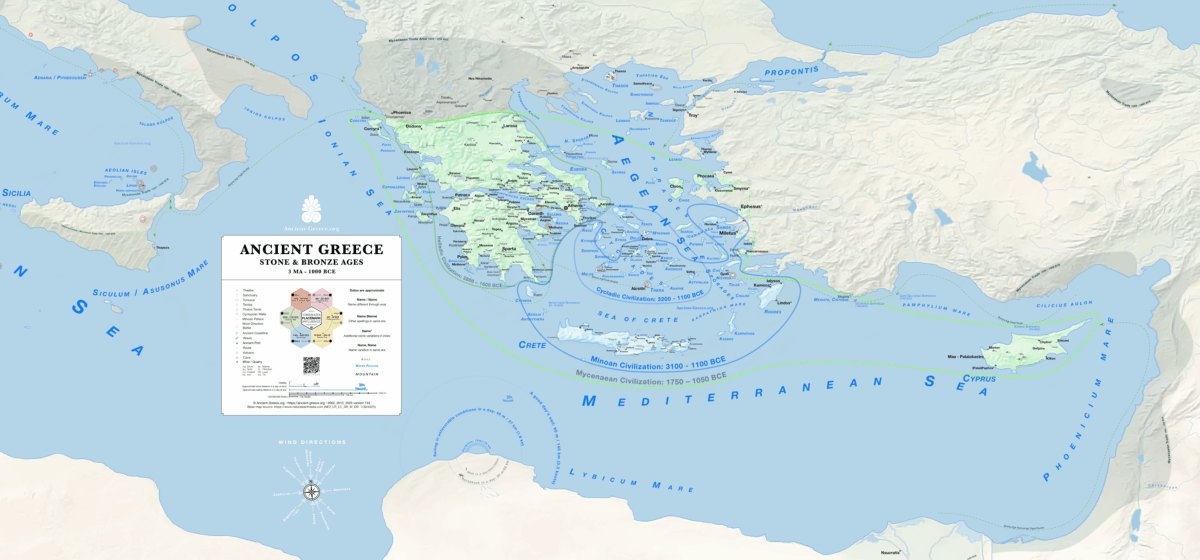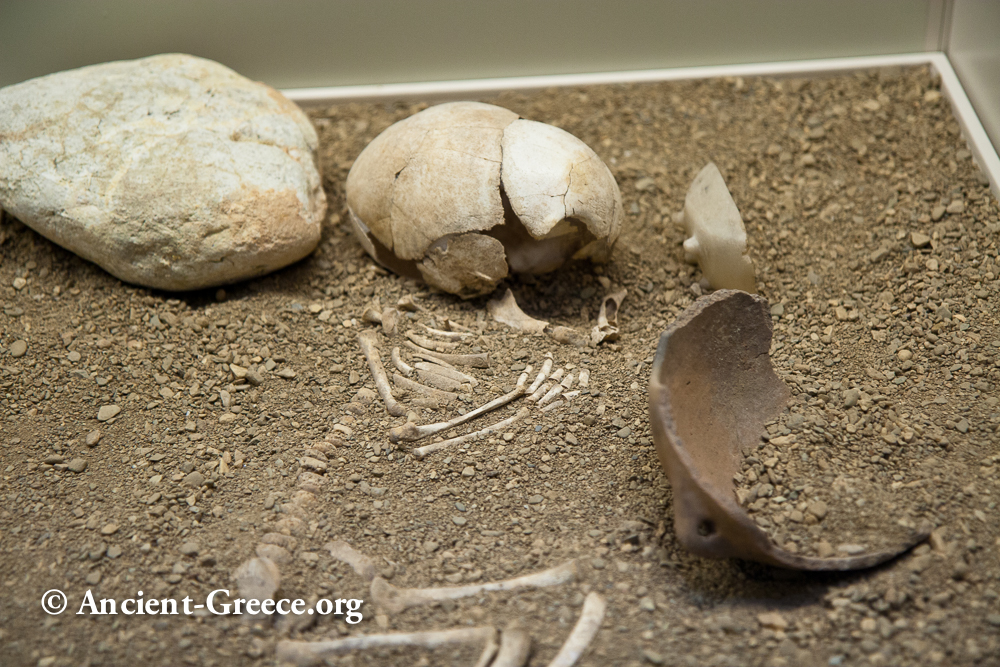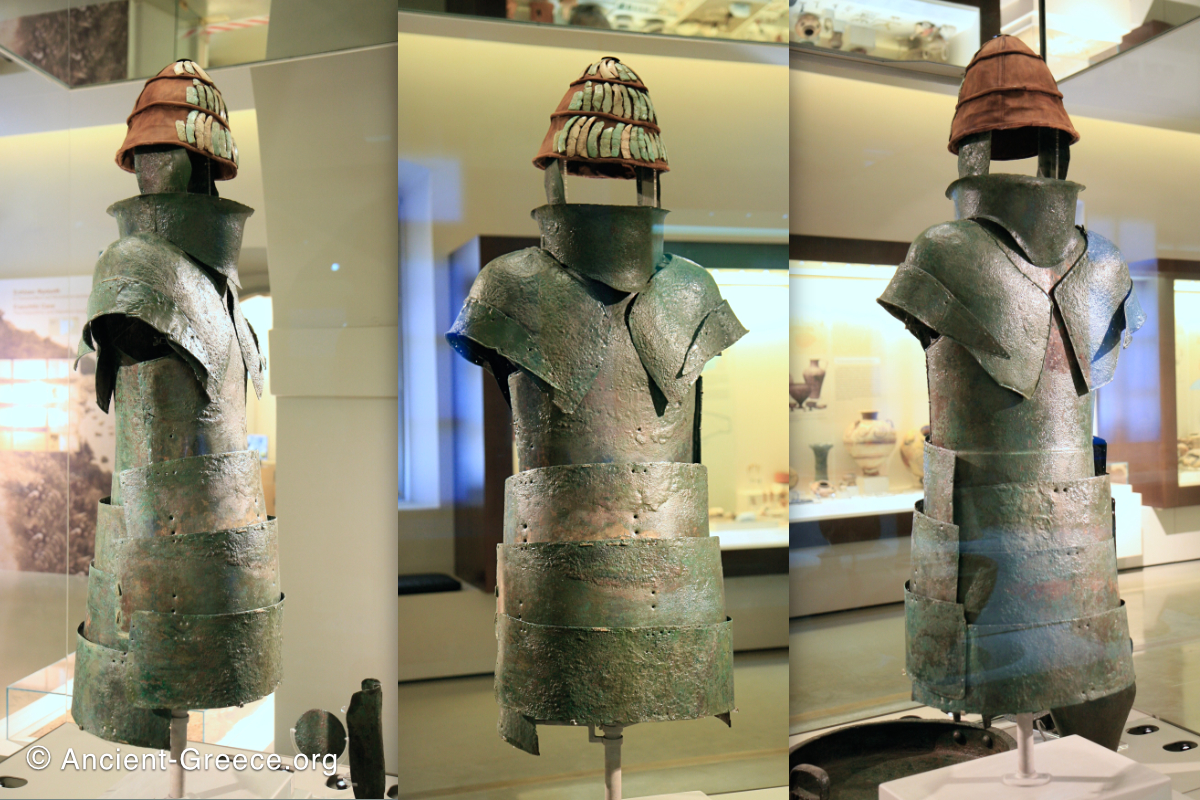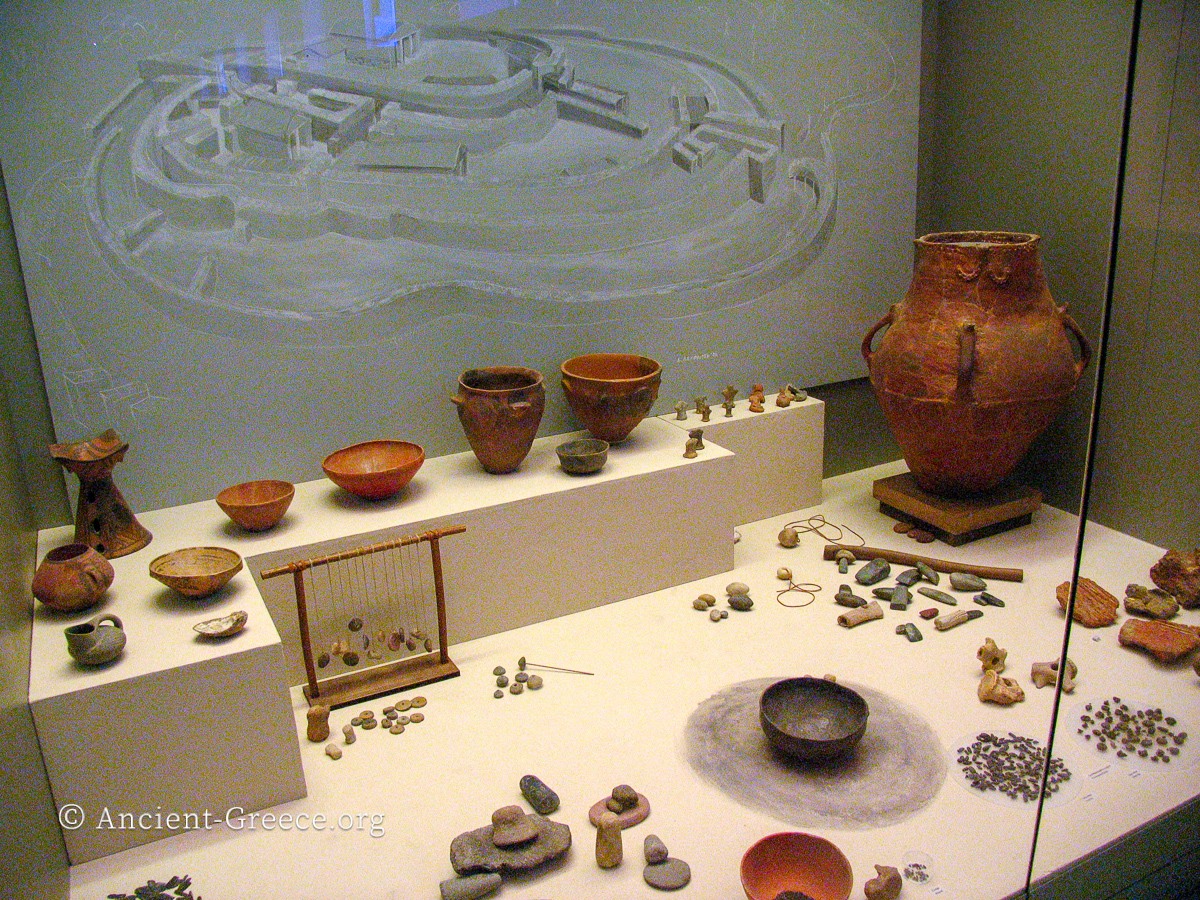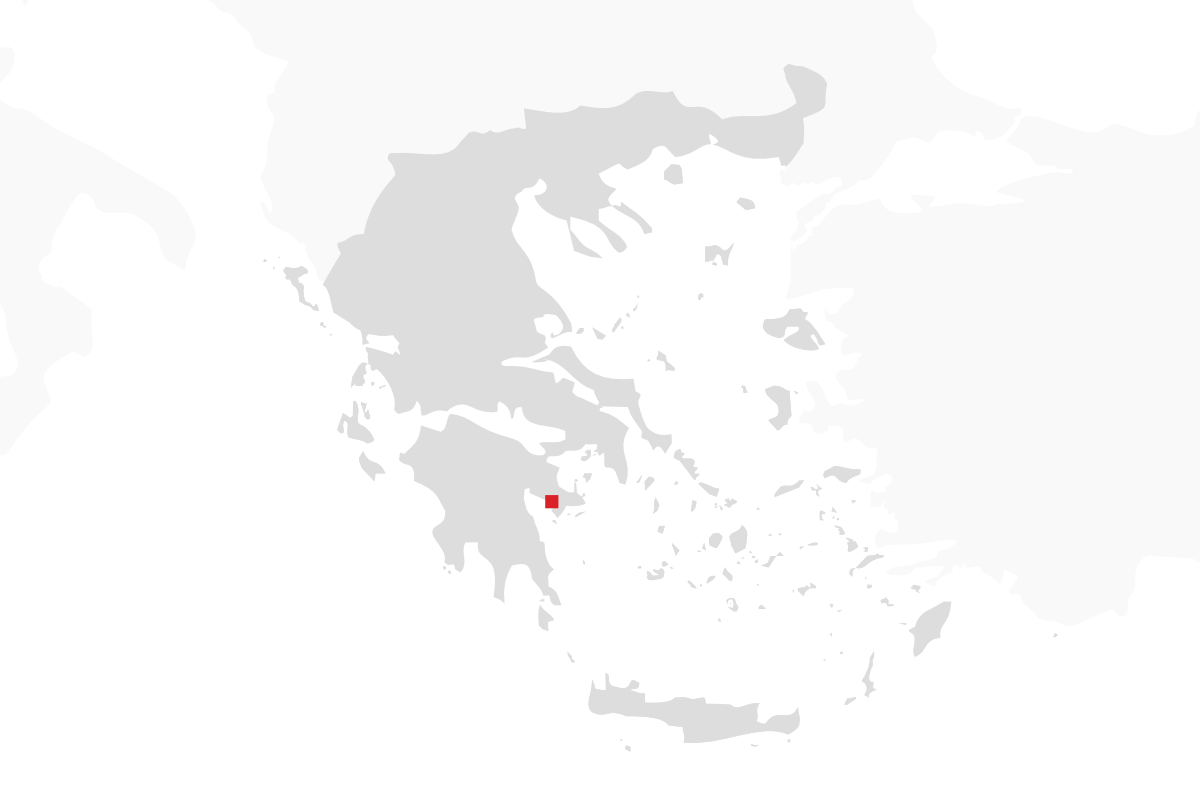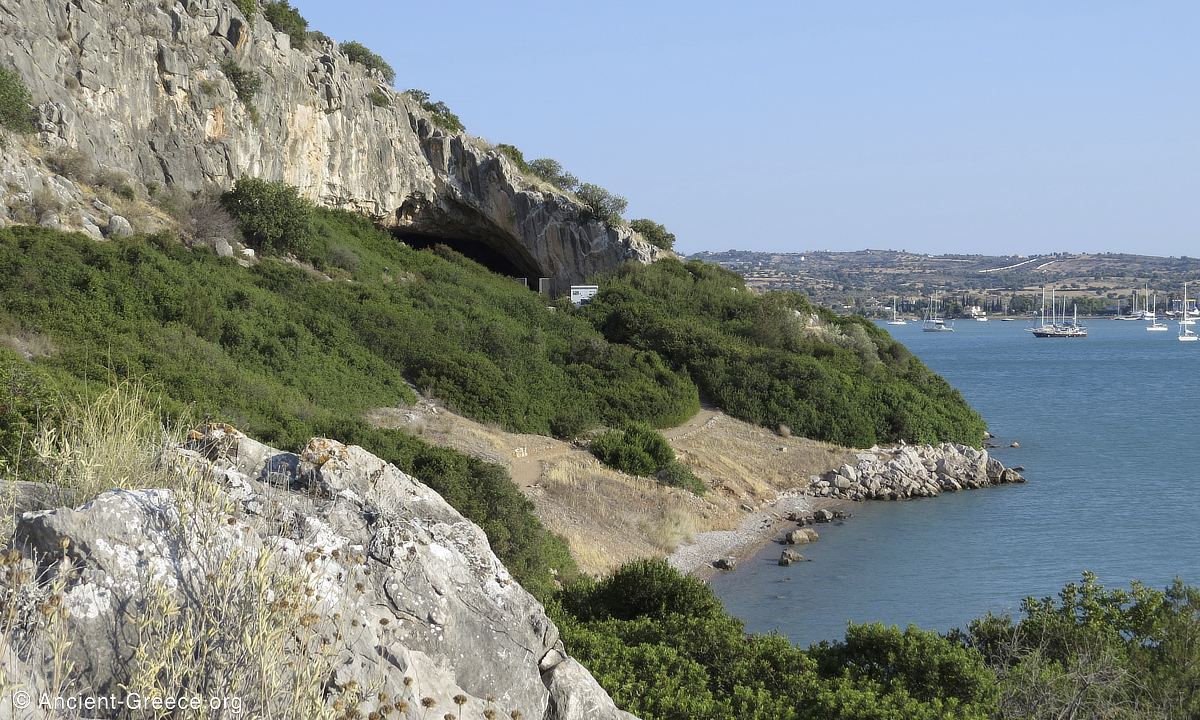
On this page:
Franchthi Cave (Φράγχθι Σπήλαιον) is an archaeological site in Argolis, Peloponnese. The cave is the best known of a very small collection of Stone Age sites in Greece.
Excavations have revealed a rich unbroken record of human habitation from the Paleolithic era (at least since 38000 BCE) to the end of the Neolithic period and beyond.
Learn more about the history of Franchthi Cave…
Cave Description
Throughout most of its inhabited history, Franchthi Cave was much farther from the seashore than today.
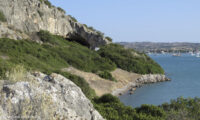
The cave encloses a large space capable of hosting a large number of people. According to the information posted on the archaeological site “The habitable part of the cave is about 150m long, while its width ranges from about 30m at the entrance to about 45m at the center, where the largest “window” is located.
Surface finds and two test pits at the rear of the cave suggest that the rockfall corresponding to this window occurred at or near the end of the Neolithic occupation of the site.
At the entrance of the cave, archaeological data prove that the rockfall on this spot belong chronologically to a period before and during the Neolithic (about 7,000 – 3,000 years B.C.).
Near and at the bottom of the pond located at the rear of the cave, potsherds and other artefacts of Final Neolithic to Early Byzantine times (about 4,500 years B.C. to the 6th century A.D.) have been found. This part of the cave may have been in regular use during the Palaeolithic until the Early Neolithic period (at least from 40,000 years to the 8th millenium B.C.), given that it was presumably a dry cavity, when sea level was much lower than today.
According to the data from the excavations carried out in the chamber at the front of the cave, prehistoric people used this area intermittently from the beginning of the Upper Paleolithic (around 40,000 years B.C.) until the end of the Neolithic (around 3,000 years B.C.).
Finally, near the cave, along the coastline and just below the current sea level, a number of karstic fresh water springs can been found. Some of them must have been available to the prehistoric inhabitants of the cave.”
“Towards the rear of the cave behind the central pile of rock, lies a small pool of brackish water. Up until the Neolithic, when sea level was lower than today, this area was a dry cavity adding usable space.”
All the excavation trenches have been filled in, and only one trench is left open as an exhibit for visitors.
A scattering of stone walls and burials was excavated in the Neolithic village at the mouth of the cave.
Franchthi Cave Photos
Photographs of Franchthi Cave in Argolis, Peloponnese. Greece. Included are images of the cave’s NW entrance, trench H-H1 with stratification indicators, general views of the interior, as well as excavated ruins of the settlement outside.
Franchthi Cave Artifacts
Artifacts from the Franchthi cave excavations are on display in the Nafplion Archaeological Museum. Examples include:
Reconstruction of a child burial from the Mesolithic era from Franchthi cave.
Objects (Stone arrows, stone and bone tools) from Franchthi Cave. Paleolithic, Mesolithic, and Neolithic – circa 10000-3000 BCE.
Middle Neolithic pottery from Franchthi cave. There is evidence that by that time, neolithic man had constructed rudimentary kilns to separate the pots from the fuel to gain more control over the final colors.
















